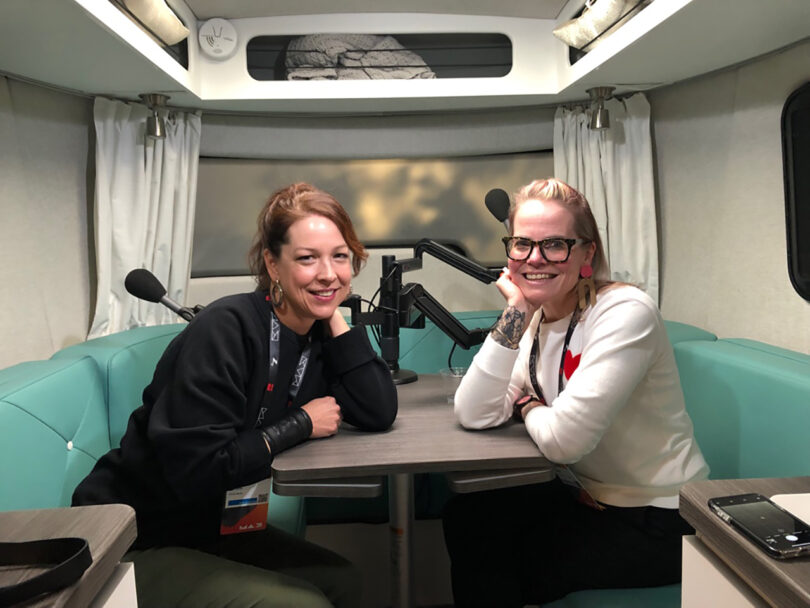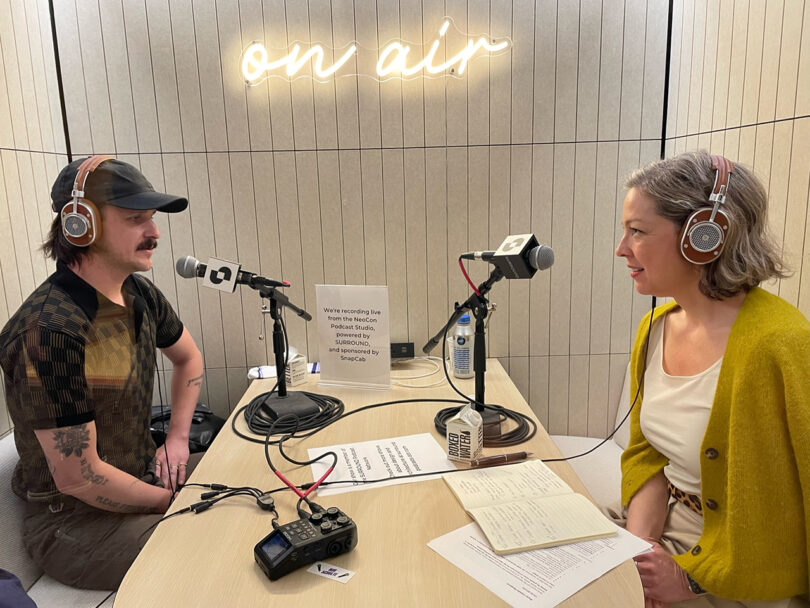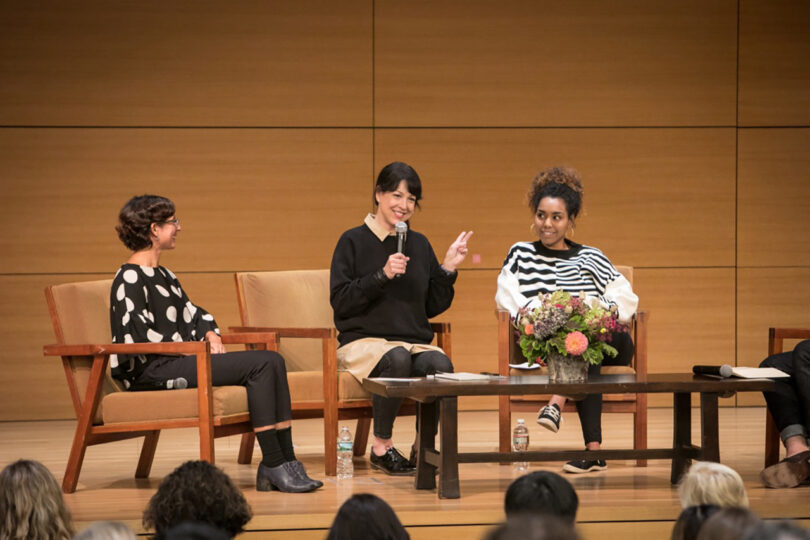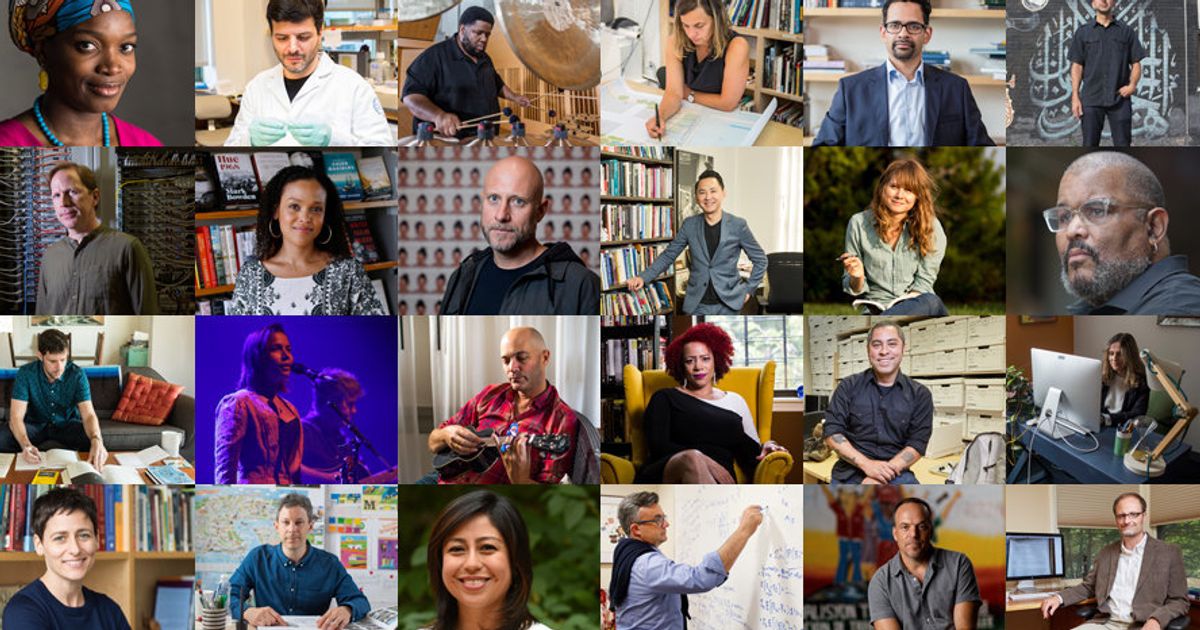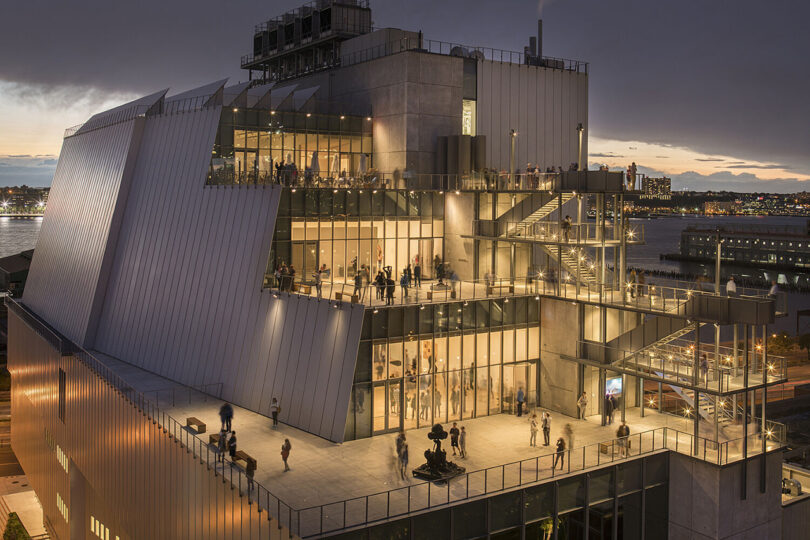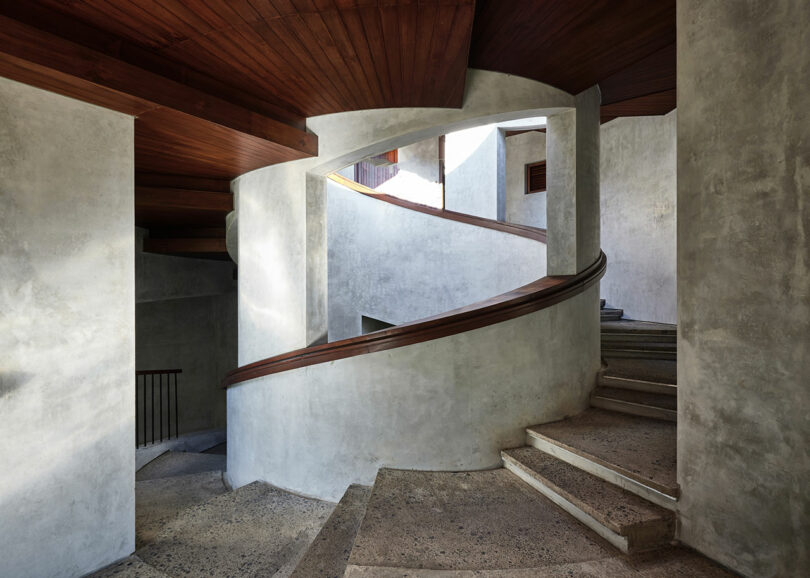Category: Architecture
This Couple’s Milwaukee Courthouse Wedding Is Romantic And Oh So Lovely
[ad_1]
High school sweethearts and Wisconsinites Sara Zoellick and Matt Boelter grew up just outside Madison, the state’s capital city. These days, though, the couple of more than a decade proudly calls Milwaukee home.
“After going to different colleges, we moved in together in Milwaukee and we’ve been here ever since,” Zoellick said. “We love Milwaukee, it’s really a part of who we are.”
The couple recently put down permanent roots in the city, buying a light-filled condo that sits right alongside the Milwaukee River.
It was only fitting that when they said “I do” in October 2016, they did so at the gorgeous Milwaukee County Courthouse.
Heather Cook Elliott Photography
Then, they celebrated with a sunset river cruise with their closest friends and family. Local photographer Heather Cook Elliot was there to capture both events.
“We loved the art deco architecture of Milwaukee County Courthouse and it just seemed so effortless to us. We felt a big wedding just wasn’t our style,” Zoellick told HuffPost. “Plus, the small wedding gave us what we really wanted, which is to always be on a boat!”
Below, Zoellick and Boelter, who are approaching their first wedding anniversary, share more special moments from the big day. Be sure to follow along with us as we profile couples marrying at city halls around the country for HuffPost’s Listen To America bus tour.
Who did you choose to invite and include in your wedding?
SZ: We had four couples in our bridal party, not counting us. I feel like couples think that just because you are getting married at the courthouse, you can’t have a bridal party ― not true. We planned our wedding in six weeks, and were very fortunate that most of our friends could join us on the big day. Our immediate families and bridal party were there for the ceremony which took place in the judge’s chamber. I bet we were pushing 20 in that room!
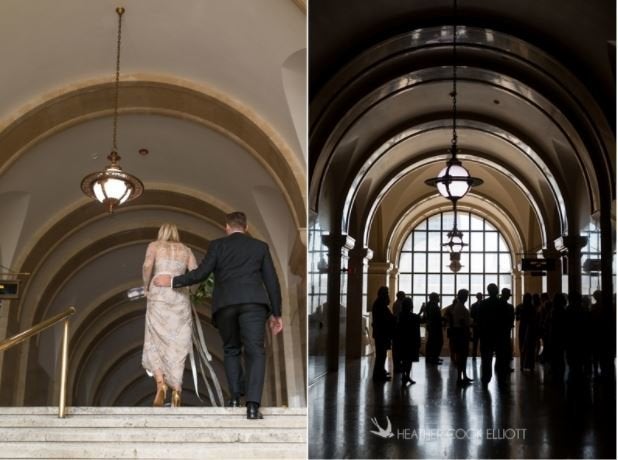
Tell us a little bit about what your wore that day. Any special signficance?
SZ: My engagement ring was a sapphire ring gifted to Matt from his grandmother shortly before she passed. We made our wedding bands from his grandpa’s wedding ring, and we were able to use the metal and stones in both our bands.
My “something old” was my great grandmother’s 1933 art deco engagement ring. She and I shared the same birthday so that was very nice to be able to include so much history in our wedding.
Matt had sapphire earrings made for me as a wedding gift to match my engagement ring (“something blue”). My wedding dress was from BHLDN.
MB: Sara’s gift to me were antique Scottish Thistle cufflinks. We went to Scotland as part of our honeymoon.

Heather Cook Elliott Photography
What was your favorite part about the wedding day, or your favorite detail?
MB: We love our wedding bands. We tell everyone about them. We love history and it means so much to the both of us that we can add our story to our heirloom rings. We really enjoyed working the designers and being apart of the creative process.

Heather Cook Elliott Photography
SZ: I would add that we both loved spending the morning with our best friends. We got ready at home. At the time our friends lived right above us and the boys got ready at their apartment and the girls downstairs at our condo. The boys decorated our 1983 blue moped with beer cans and just married sign for our first look. So great!

Heather Cook Elliott Photography
What were your post-wedding festivities like?
The rest of our invitees (about 60 total) joined us for a cocktail cruise and first dances on the Milwaukee River and Lake Michigan. Afterward, we hosted a dinner reception at one of our local bars, Paddy’s Pub. The boating was our favorite part of the reception ― we love showing off Milwaukee, and it looks so amazing from the water!
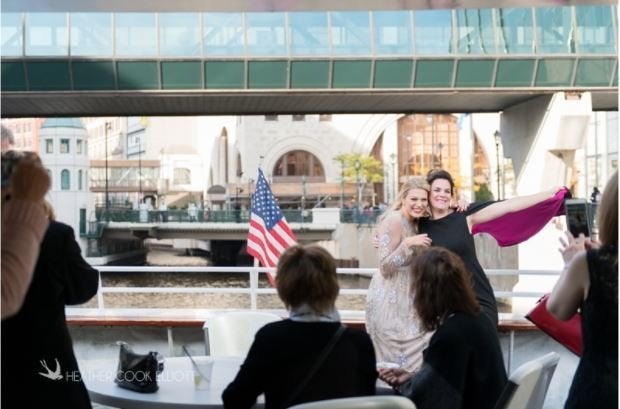
Heather Cook Elliott Photography
What do you love most about living in your city? What’s your ideal date night there?
SZ: We really enjoy the amenities of a big city in a small town package. Our ideal date night would be a hike up the Milwaukee River Greenway to the Hubbard Park Beer Garden for a liter and a concert. Then, we’ll stroll the city streets back home and critique the mix of old Victorian houses amidst modern construction. In the summer there is always a festival, block party, or concert to go to, and if the weather is bad we can choose between a hot new restaurant or a classic supper club like Jack Pandl’s for a good ol’ fish fry and an old-fashioned.
In winter we like to cozy up to an old hotel fireplace (our favorite spot for that is Hotel Pfister) or just put on the snow boots and head down to our local bar ― Just Art’s Saloon ― for pizza and to complain about the weather. Art’s isn’t for everyone but its totally for us. Makes you feel like you are back home in a small town. Everyone knows everyone.
See more photos from the couple’s big day below:

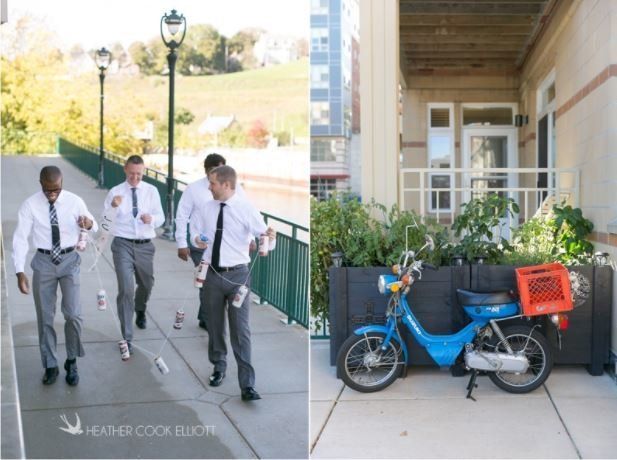


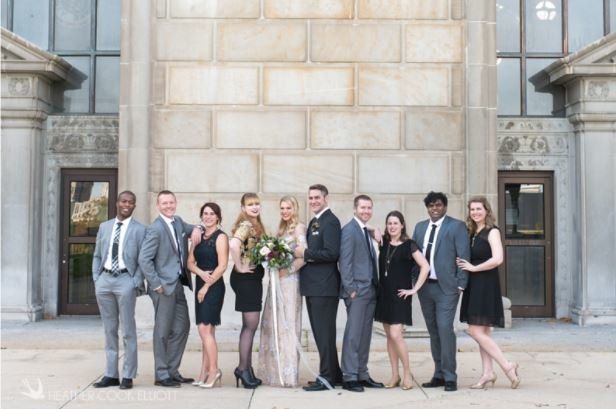



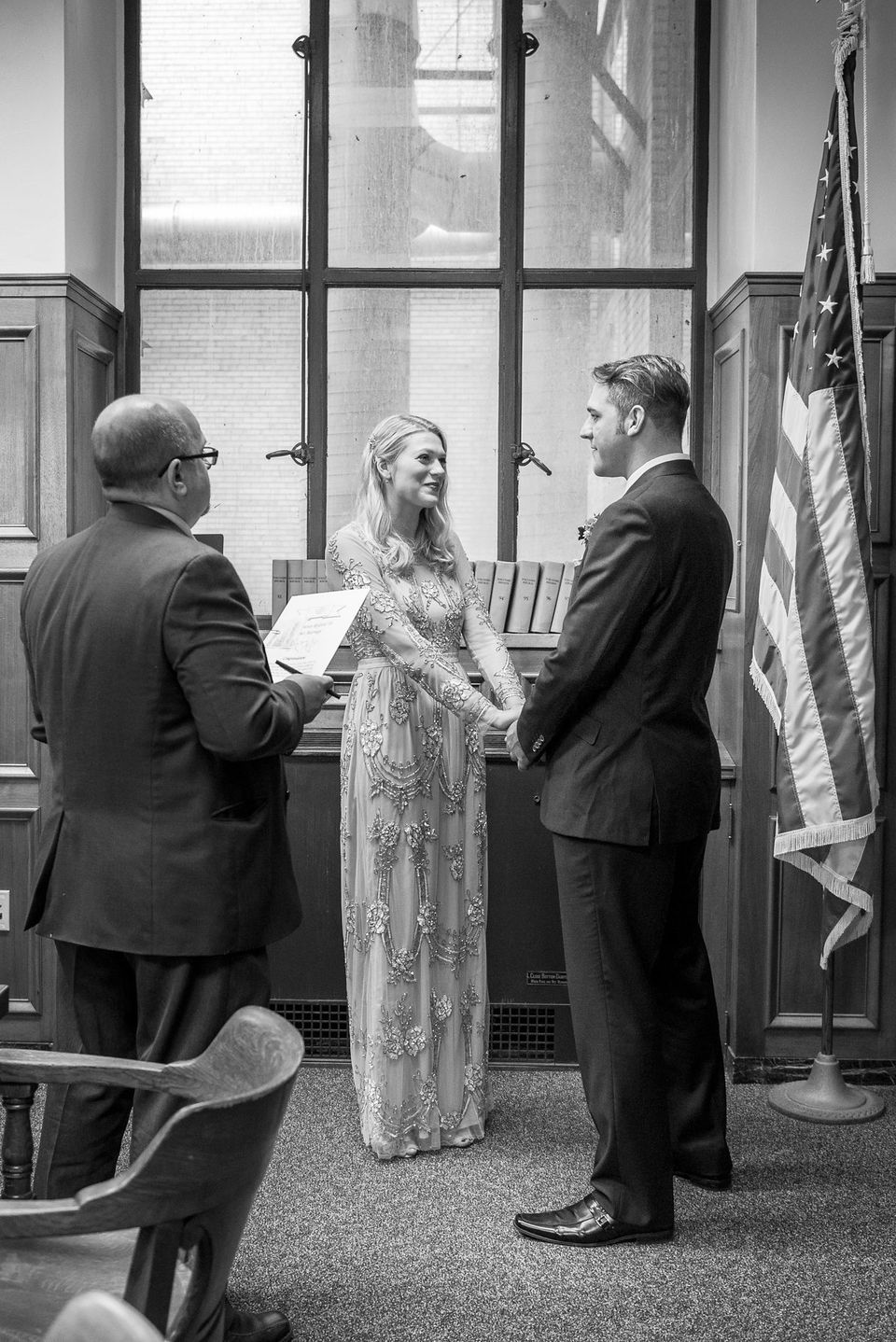


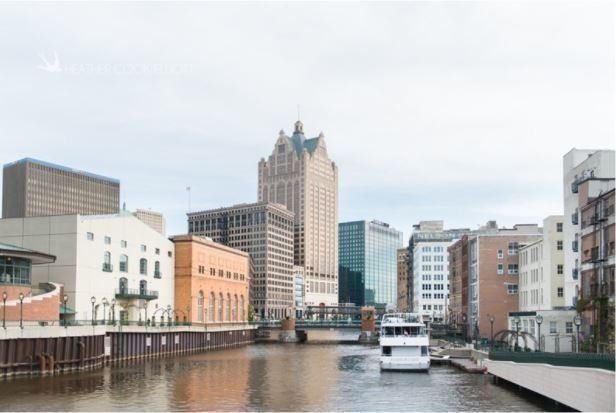



Heather Cook Elliott Photography
[ad_2]
Source link
Where Industrial Charm Meets Urban Elegance
[ad_1]
The latest project from lamatilde, Casa MRGT, is a 4-story loft apartment inside an industrial building in the Barriera di Milano district of Turin, Italy. The apartment brings together an urban and minimalist aesthetic throughout its 350 square meters (over 3,767 square feet) of inside space, in addition to a 250-square-meter rooftop terrace. Designed for a Canadian-born car designer, the loft captures the essence of the neighborhood, exuding an industrial and contemporary vibe that aligns with lamatilde’s signature style.
What sets this project apart is its commitment to an open floor plan that’s highlighted by voids thanks to the addition of geometric volumes incorporated to define the spaces. Dark metal finishes starkly contrast with the expansive light surfaces, celebrating the interplay of light and shadow that streams through the apartment.
Stacked metallic volumes offer additional enclosed spaces, including a burnished carbon steel sheet metal room dedicated to a home theater on the bottom, and a cozy guest room paneled in micro-perforated sheet metal above.
Casa MRGT’s ground floor is a garage that doubles as a gallery for the owner’s classic car collection. With vibrant yellow accents and exposed structural elements, the space is an eclectic backdrop to the cars it houses. A private freight elevator and a steel staircase connect the garage to the rest of the home, transforming from raw industrial materials into more welcoming domestic finishes.
The second floor boasts an open-concept living area with a custom designed kitchen island by lamatilde. Charles couches by B&B Italia and vintage Wassily Chair armchairs by Knoll create a blend of modern and classic design. The dining area features a large Tavolo 25 table by Desalto with Calligaris chairs, illuminated by an Algorithm chandelier from Vibia.
Tucked away behind the kitchen, two bedrooms with ensuite bathrooms offer cozy accommodations.
The third floor is home to the primary bedroom, which is built off of a central walk-in closet. The open space includes a walk-in shower and floating black bathtub in the middle of the bedroom. The space leans towards a contemporary minimalist aesthetic complemented by iconic design pieces, such as the LC4 chaise lounge by Cassina.
A wooden slat structure can be opened and closed allowing for personalized light and privacy while overlooking the open living space below.
Finally, the pièce de résistance is the fourth floor, a rooftop terrace that offers panoramic views of the city. It features a pergola, outdoor kitchen, seating spaces, sauna, and a swimming pool (!!), all encircled by lush greenery and small fruit trees.
Photography by Alessandro Saletta – DSL Studio.
[ad_2]
Source link
There Is More To Detroit Than Urban Blight
[ad_1]
When I moved to Detroit in the mid-’90s, my friends and colleagues in Atlanta thought I was crazy. Detroit’s national reputation suggested that smart people knew to stay away. I challenged the prevailing narrative outsiders had about the city. And I still do. At the same time, there are many issues that plague the community. So each day I applaud the positives of life in Detroit and work to resolve the negatives.
The pluses are many. Without question, Detroit has one of the nation’s strongest arts communities. The Detroit Symphony Orchestra, the Wright Museum of African American History, the Michigan Opera Theater and the Detroit Institute of Arts are each world-class entities. They are in the heart of the city and attract diverse local, national and even international audiences. Along with the many galleries, community theaters and choirs, Detroit has an arts enterprise that rivals any other metropolitan area in the country.
World-class colleges and universities also contribute to a vital community, and bring smart, interesting, engaging people to the region. Students from across the globe study in the metro area. The diversity of cultures and perspectives offer an opportunity to learn, engage in thoughtful dialogue and experience a wide array of foods.
Why wouldn’t you want to live in Detroit?
For some, the answer to that question lies in the effects of years of disinvestment in the city, the crime rate, the poor public school system, the absence of major retail in the downtown area, racial tensions, high taxes, exorbitant auto insurances and crumbling infrastructure.
“I have seen first-hand how lives are transformed through adult education and skill development.”
Taken by themselves, this litany of ills would frighten anyone away from Detroit. However, if you look at that list as opportunities for improvement and growth, you will see many reasons to be a part of the city’s ongoing renaissance. The community’s major strength lies in the resourceful, committed, hopeful and dedicated citizens.
I have seen first-hand how lives are transformed through adult education and skill development. Men and women have been able to move from poverty to life-sustaining employment as the result of the programs offered by the Focus: HOPE agency. Community gardens and neighborhood entrepreneurial ventures have blossomed in the city to bring communities together in a sharing economy.
The Detroit Public Schools Foundation (DPSF) has also offered students opportunities to improve. Students in Detroit’s public schools have learned from the Dance Theater of Harlem and performed at the Opera House. DPSF has made these and other out-of-class experiences possible despite the absence of district funds to provide these extra-curricular activities. There are many other examples of positive programs and projects that make Detroit a great place to live.
Nonetheless, much of the national press has focused on the the significant blight that has taken over too many neighborhoods. It’s true that the magnitude of blight in this city is unprecedented in America. Of the 380,000 total parcels, Motor City Mapping identified 84,641 that needed some type of intervention. Of these, 73,035 were residential, 5,471 commercial, and 6,135 were vacant lots.
There has been a concerted effort by the city administration to demolish buildings that cannot be saved, remodel and sell those that are in “tipping point” neighborhoods and clean vacant lots. A report from 2014 recommended the removal of 40,000 structures in the city. The goal of this large-scale effort is to create a climate of hope and optimism for residents. While there is still much work to be done, the progress on the removal of blight is noticeable. Our challenge is to continue the forward movement, in light of limited available funds.
“The removal of blight is an essential first step in the design of a safer city with the opportunity to increase property values.”
The removal of blight is an essential first step in the design of a safer city with increased property values. The Blight Removal Task Force is a model public-private collaboration that has shaped much of the work done by Detroit Land Bank and the office of the mayor. The recommendations contained in the Task Force report leverage assets from government, philanthropic and non-profit sectors.
The data collection that has been integral to the blight removal planning process will inform all members of the community. Once it becomes clear which housing stock is best suited to families, schools will be able to better serve children in those neighborhoods. Commercial enterprises will know where to locate. Entertainment will follow. An incremental building process will naturally occur, resulting in strong communities where citizens will want to live, work and play.
The built environment will amplify the cultural and economic environments. Thus continuing to implement the Blight Removal Task Force Plan is a necessary requirement to ensure the rest of the country knows that Detroit is a great place for everyone.
But no matter what programs or projects are implemented, the people make this city great.
[ad_2]
Source link
200 Episodes of Being Candid, Creative + Human
[ad_1]
Every single thing that surrounds us and inhabits our environment has been designed by someone. Today, Clever – one of our favorite podcasts – is celebrating 200 episodes of sharing these creative visionaries who shape our world and culture. Sustaining a platform for so long deserves acknowledgement, so we spoke with host Amy Devers about how Clever came to be, how it’s changed, and what the future of the podcast might look like.
In 2016, after many run-ins with one another at design events, Design Milk founder Jaime Derringer and furniture designer and fabricator Devers collaborated to create Clever as an independent side project. It would be too simple to say that Clever is a podcast about design, because what it’s really doing is reminding listeners that these visionaries, problem-solvers, critical thinkers, rebels, and aesthetes are also human. The conversations are candid and revealing, pulling back the curtain to reveal those responsible for the things that help to shape our lives by adding meaning and connection to the world around us.
“I had grown disenchanted with the narrative around design that a lot of lifestyle TV shows were putting forward,” said Devers. “It felt like a flattened, incomplete picture that was missing all the juicy stuff that made design truly fascinating and powerful. I was on a mission to create stories that offered a deeper perspective and served to help expand our collective understanding of design.”
In the past 200 episodes, Clever has grown and matured from the early days of having to rely on “gimmicky” conversation tricks to have guests reveal themselves beyond their latest project. As the podcast grew, the conversations naturally turned more real, deeper, and philosophical.
I asked Devers if she noticed a thread connecting the creative professionals featured, and she shared at least one pattern that’s emerged. “So many creative professionals had NO IDEA when they were younger that design as a career was an option. Of course the (super detrimental) stereotype of the “starving artist” was prevalent, but the possibility of becoming a sound designer, architect, or industrial designer just wasn’t available. Many of my guests stumbled into their callings by accidentally discovering a class in college or by way of an eccentric aunt or uncle. (Bless those aunts and uncles, they are doing important work!)” She added, “Imagine the world if all children grew up knowing that every single human-made thing is designed? And that there are many creative paths, careers, and fields of study that are available. I think a much broader set of opportunities should be revealed to them earlier on, and we’d have a lot more diversity in the design pipeline.”
In 2019, Derringer decided to step away from co-hosting Clever, giving way to a deeper one-on-one style of conversation. “I focused more on active listening and less on moving the conversation forward. I still prep questions in advance, but the interviews, more often than not, veer into uncharted territory and that is where I love to be,” Devers shared. “But I also want to stress that Jaime’s influence is still very much alive here at Clever. When it was time for her to leave Clever to explore different horizons, we both knew it, and the separation felt necessary, healthy, and promising for both of us. Plus, she’ll text me anytime she comes across a person she thinks would make for a great interview.”
After so many episodes, Devers is still as excited as ever abut Clever. “Creative people are infinitely fascinating. I fall a little bit in love with my guest [almost] every single time. Every time I dive into the research I get energized by the sheer ingenuity and grit of the person I’m about to speak to. And, I make a point of keeping the conversation trained on their personal story so it never devolves into just a sales pitch of their book or latest project. It’s a simple metric: I lose interest when someone is trying to sell me something, and I gain interest when someone is trying to tell me something. Sharing bravely, being vulnerable, self-reflective, and transparent about the challenges as well as the triumphs, detailing actual lived-experiences and honest perspectives is the magic formula and it’s intoxicating!”
Looking ahead at the next 200 episodes, Devers would love to do more live shows to create special experiences. “I imagine intimate gatherings in spectacular locations, (think architecturally and/or historically significant Airbnbs, under a full moon in the Catskills, in a pop-up art installation or museum gallery) where the conducive atmosphere and the warmth of the collective can be felt in the chemistry of the conversation. Anyone want to join me in something like that?”
While the host names Prince, Gwen Verdon and Bob Fosse, Zaha Hadid, and Virgil Abloh as guests she would have loved to feature, Devers looks forward to the chance to hopefully interview Emory Douglas, Es Devlin, Roman Mars, Ira Glass, Neri Oxman, and Sonya Clark should the opportunities arise.
A recent favorite Clever episode is 199: Twenty Thousand Hertz’s Dallas Taylor on Sound, Silence, and Stories. The sound designer has a powerful story that’s very human behind his creative journey. Listen to this episode and 199 others at cleverpodcast.com.
[ad_2]
Source link
MacArthur Foundation Announces Its 2017 Class Of ‘Geniuses’
[ad_1]
From a reporter who’s dedicated her career to documenting segregation in America’s education system, to one of the first computer scientists to hack an automobile, to an artist who doubles as a counter-surveillance researcher, this year’s roster of MacArthur Fellows celebrates yet another year of exceptional human achievement.
The John D. and Catherine T. MacArthur Foundation announced the latest recipients of its annual MacArthur Fellowship ― frequently referred to as the “Genius Grant” ― early Wednesday morning. Nikole Hannah-Jones, Stefan Savage and Trevor Paglen are but three members of an impressive class of 2017 fellows, newly endowed with a $625,000 check and an accolade previously attached to icons like Susan Sontag, astrophysicist Joseph Taylor and musical tour de force Lin-Manuel Miranda.
The MacArthur Foundation began doling out grants in 1981 in an effort to identify and extol high-achieving individuals in a wide range of disciplines. (The 2017 list of grantees counts a painter, immunologist, human rights strategist, urban planner and novelist among its two dozen-deep roster.) The once-$50,000 award has since ballooned into the six-figure, “no strings attached” grant we know today. There are no restrictions governing what recipients do with their fellowship bounty.
This year, the fellows include nine women, 14 men and one gender-non-conforming individual, ranging in age from 33 to 63. See the entire list of new “geniuses” below.
For more MacArthur Fellowship coverage, check out our interviews with grantees Rhiannon Giddens and Viet Thanh Nguyen.
Jesmyn Ward (Fiction Writer)
John D. and Catherine T. MacArthur Foundation
Jesmyn Ward is a 40-year-old fiction writer based in New Orleans, Louisiana, whose stories bring black, marginalized communities to the center. Her three novels, including Salvage the Bones (2011) and Sing, Unburied, Sing (2017), address brutal and often ignored realities including poverty, racism, addiction and incarceration with honesty, affection and rigor.
Gabriel Victora (Immunologist)
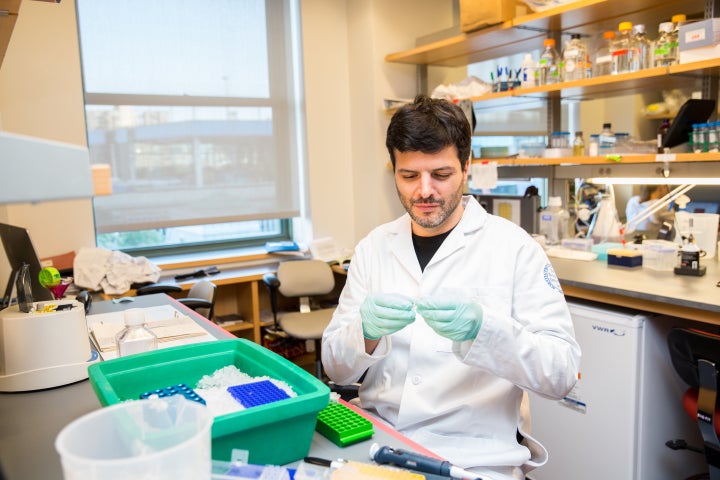
John D. and Catherine T. MacArthur Foundation
Gabriel Victora is a 40-year-old immunologist working in New York City. He adapted and perfected cellular imaging methods to better visualize the process through which adaptive immunity develops. His analysis of B cells yielded “the most definitive evidence to date that affinity maturation of antibodies occurs in a manner akin to Darwinian evolution,” a previously hypothesized but not ultimately proven conclusion that will benefit the creation of new and more potent vaccines.
Tyshawn Sorey (Composer and Musician)

John D. and Catherine T. MacArthur Foundation
Tyshawn Sorey is a 37-year-old multi-instrumentalist, composer, performer and conductor in Middletown, Connecticut. His singular practice straddles the line between improvisation and composition, collapsing boundaries between genres and traditions including Western classical, American and Ethiopian creative expressions, resulting in experimental, avant-garde arrangements that test the limits of musical performance.
Yuval Sharon (Opera Director and Producer)
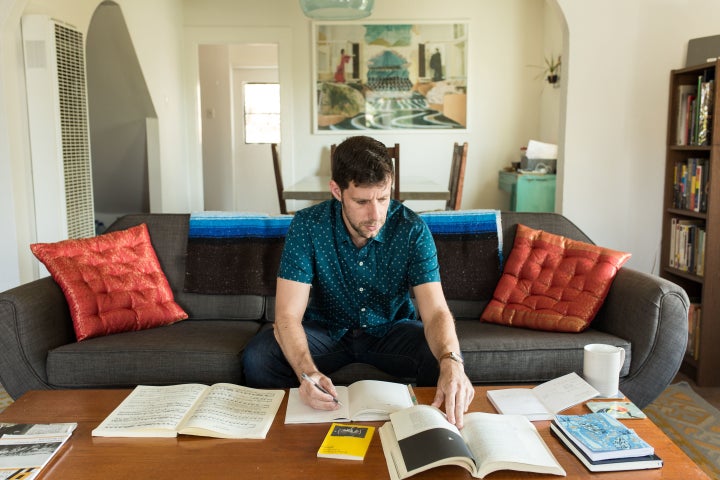
John D. and Catherine T. MacArthur Foundation
Yuval Sharon is a 37-year-old director and producer of opera whose unorthodox performances ― often immersive and itinerant ― challenge the predominant understanding of what opera can be. His 2014 piece Hopscotch: A Mobile Opera for 24 Cars, took place in and around Los Angeles, with audience members commuting in limousines as singers and musicians emerged at various locations ― and within the vehicles themselves ― to tell a dynamic story within a living city.
Stefan Savage (Computer Scientist)

John D. and Catherine T. MacArthur Foundation
Stefan Savage is a 48-year-old computer scientist whose interdisciplinary techniques address cybersecurity in the age of “smart” devices. Based in LaJolla, California, Savage recently demonstrated how an automobile could be hacked remotely and began working with car manufacturers to reduce security threats. His research in internet-related crimes, and the technological and cultural blindspots that enable them, prove critical in today’s constantly evolving technology landscape.
Damon Rich (Designer and Urban Planner)

John D. and Catherine T. MacArthur Foundation
Damon Rich is a 42-year-old designer and urban planner whose strategies uproot the systems of oppression and discrimination embedded in cities’ layouts through predicaments like division, gentrification and environmental injustice. The Newark, New Jersey-based planner is known for his clever and sometimes witty approach to the field, as evidenced in his 2009 book Red Lines Housing Crisis Learning Center, which used the Queens Museum’s 1,000-square-foot representation of New York City to visualize the foreclosure crisis. His work invites citizens who are often disenfranchised to the forefront of conversations about urban design, bringing democracy to the city space.
Derek Peterson (Historian)
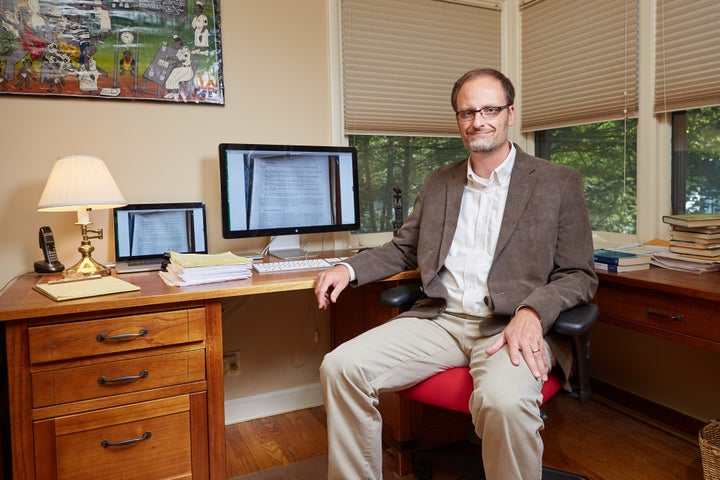
John D. and Catherine T. MacArthur Foundation
Derek Peterson is a 46-year-old historian and professor at the University of Michigan in Ann Arbor, where he studies and preserves East African texts, specifically in Gikuyu and Swahili, to challenge predominant narratives regarding colonialism and nationalism in Africa. Peterson’s research incorporates an unrivaled array of written materials, ranging from diaries and religious pamphlets to syllabi and dictionaries, which speak to the interplay of motivations, perspectives, traditions and contexts at play in these often overlooked materials.
Betsy Levy Paluck (Psychologist)
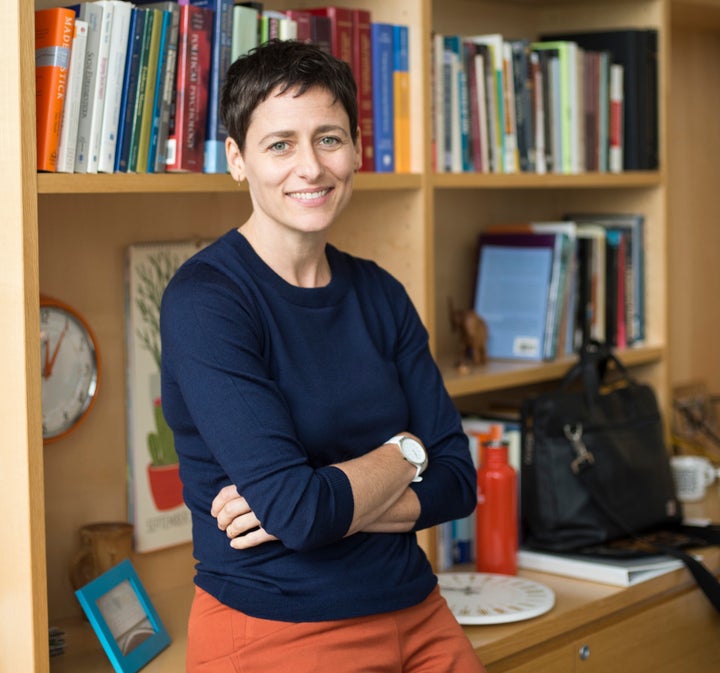
John D. and Catherine T. MacArthur Foundation
Betsy Levy Paluck is a 39-year-old research psychologist at Princeton University concerned with destructive patterns of human behavior, including discrimination, bullying and ethnic conflict. Paluck’s field research, which has taken her from American high schools to post-conflict Rwanda, determined that, as the MacArthur Foundation describes, “to change behavior, it is more important to target individuals’ perceptions of social norms than their personal beliefs.”
Trevor Paglen (Artist and Geographer)
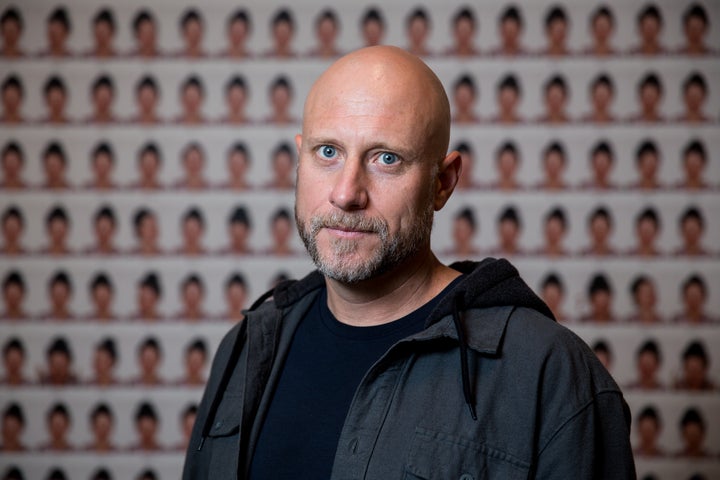
John D. and Catherine T. MacArthur Foundation
Trevor Paglen is a 43-year-old, Berlin-based conceptual artist and geographer who uses public records and declassified documents as artistic materials, exposing the alarming grip military and corporate power possess in today’s climate of mass surveillance. His practice includes the establishing of “limit telephotography,” which uses high-power telescopes and cameras to photograph secret prisons and military bases.
Kate Orff (Landscape Architect)
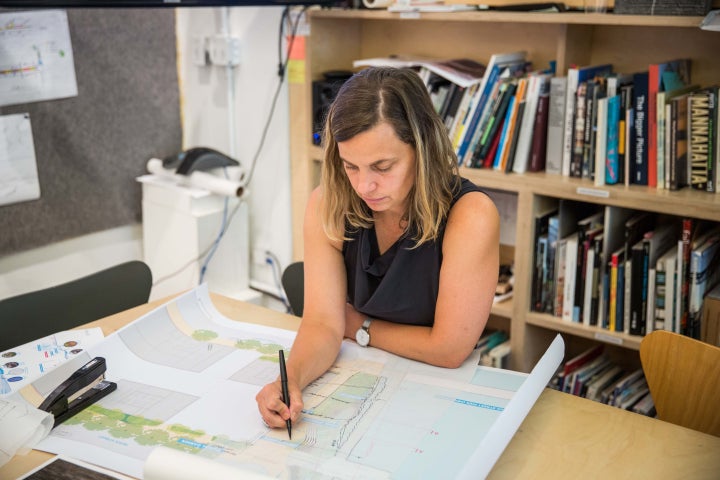
John D. and Catherine T. MacArthur Foundation
Kate Orff is a 45-year-old landscape architect and founding principal of SCAPE, a Manhattan-based urban design studio that believes in urban landscapes’ ability to revive ecosystems, adapt to the difficulties posed by climate change and connect individuals. Orff collaborates with ecologists, engineers, educators, artists and community members to draw attention to the natural histories of specific regions, whether through infrastructure initiatives or podcast tours.
Viet Thanh Nguyen (Fiction Writer and Cultural Critic)

John D. and Catherine T. MacArthur Foundation
Viet Thanh Nguyen is a 45-year-old writer, cultural critic and University of Southern California professor who uses fiction to provide a “voice to the voiceless,” specifically by humanizing underrepresented minorities. His 2015 novel The Sympathizer is a spy thriller told from the perspective of a communist double agent in and after the Vietnam War. His stories offer alternative understandings of well-trodden American war stories, where marginalized voices are often obscured and erased.
Rami Nashashibi (Community Leader)
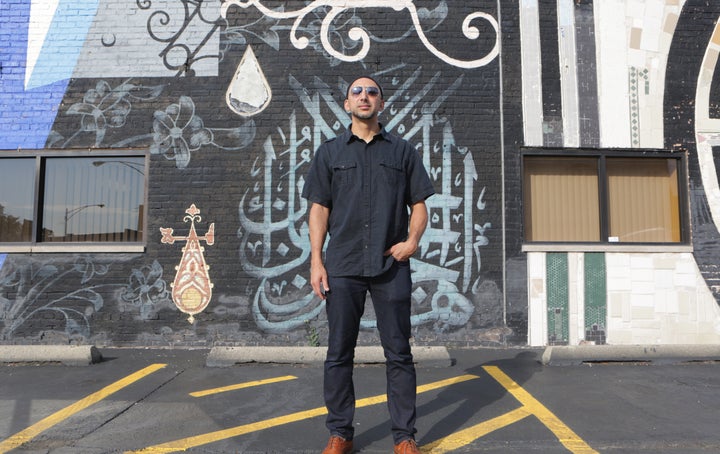
John D. and Catherine T. MacArthur Foundation
Rami Nashashibi is a 45-year-old community leader and the executive director of the Inner-City Muslim Action Network (IMAN). The organization, based in Chicago’s South Side, works to provide health and wellness services, community organizing, criminal justice reform, arts enrichment and other services to low income residents. His Muslim Run Corner Store Campaign brought a wider selection of healthy foods to overlooked neighborhoods and eased racial tensions between the predominately Arab immigrant store owners and black patrons.
Taylor Mac (Theater Artist)
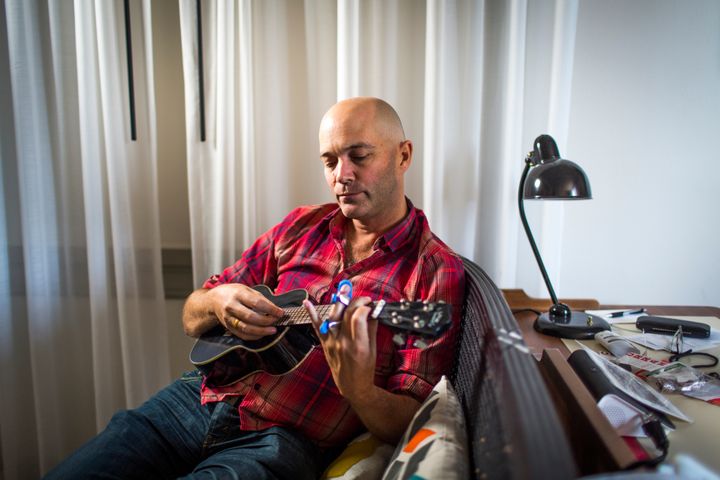
John D. and Catherine T. MacArthur Foundation
Taylor Mac is a 44-year-old, New York-based theater artist ― and at times a playwright, performance artist, actor and all three at once. Mac, who uses the gender pronoun judy, breaks down distinctions between highbrow and lowbrow art to toy with cultural assumptions about gender, performance and identity. judy’s 24-hour piece “A 24-Decade History of Popular Music” (2014–2016), explores the history of American popular music through a queer lens, highlighting the instances in which pop culture innovations have emerged as weapons against intolerance and injustice.
Cristina Jiménez Moreta (Social Justice Organizer)
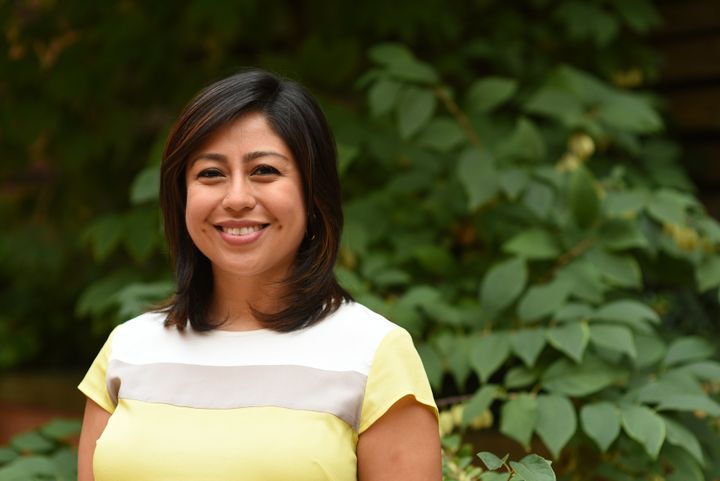
John D. and Catherine T. MacArthur Foundation
Cristina Jiménez Moreta is a 33-year-old social justice organizer, as well as the co-founder and the executive director of United We Dream, a nationwide network dedicated to helping immigrant families based in Washington, D.C. Moreta came to the United States from Ecuador as a 13-year-old undocumented immigrant. She has since worked to put young people at the forefront of a strategic effort to challenge the stigmas undocumented youth face and enact the policy changes necessary to protect them from deportation and offer a pathway to citizenship.
Rhiannon Giddens (Singer, Instrumentalist and Songwriter)

John D. and Catherine T. MacArthur Foundation
Rhiannon Giddens is a 40-year-old singer, instrumentalist, songwriter, musical historian and activist based in Greensboro, North Carolina. Having trained as an opera singer before mastering the fiddle and five-string banjo, Giddens illuminates the overlooked influence of African-American artists to genres like folk and country. “I’m really interested in shining a light on those aspects of musical history that have been traditionally neglected and left behind,” she told the MacArthur Foundation. “Because I feel that our current situation can be explained by what’s going on culturally in years past that hasn’t been addressed.”
Nikole Hannah-Jones (Journalist)
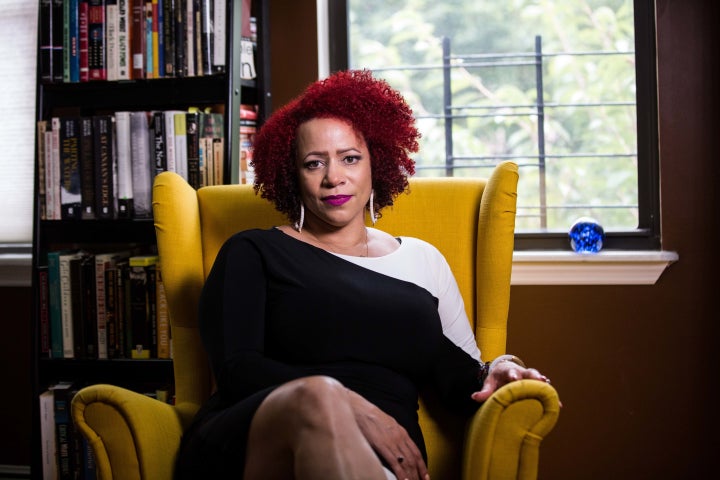
John D. and Catherine T. MacArthur Foundation
Nikole Hannah-Jones is a 41-year-old investigative journalist for The New York Times Magazine who often explores the effects of segregation on the American education system. Her work, including the 2016 article “Choosing a School for My Daughter in a Segregated City”, combines historical research and political analysis with first-person accounts, bringing the persistent reality of systemic racism and its pernicious effect on children and communities into sharp focus.
Jason De León (Anthropologist)
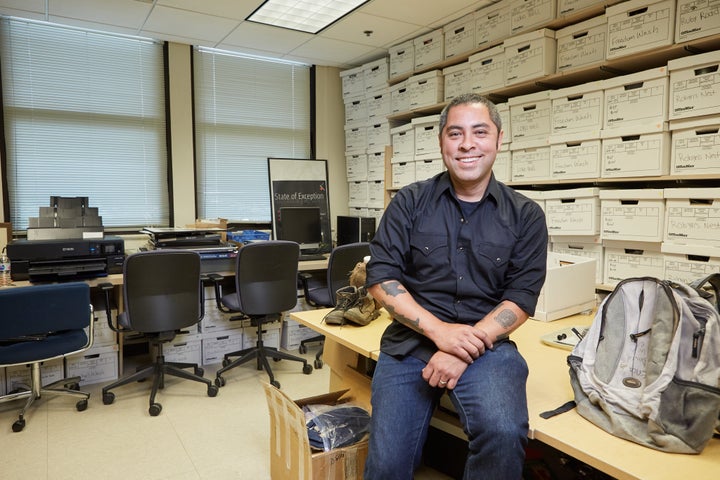
John D. and Catherine T. MacArthur Foundation
Jason De León is an anthropologist at the University of Michigan who combines ethnographic analysis, forensic science and archaeological research in his work studying migration from Latin America to the United States. His 2015 book The Land of Open Graves: Living and Dying on the Migrant Trail, investigates the approximately 300 people a year who die attempting to cross the U.S.-Mexico border, often with no identification or belongings on their person. The work explores who they are, how they die and what happens to them afterward.
Emmanuel Candès (Mathematician and Statistician)

John D. and Catherine T. MacArthur Foundation
Emmanuel Candès is a 47-year-old applied mathematician and statistician at Stanford University. His research, as explained by The MacArthur Foundation, “focuses on reconstructing high-resolution images from small numbers of random measurements, as well as recovering the missing entries in massive data tables.” Candès compared the technique, which is applicable in fields from diagnostic healthcare to radar imaging, to inferring a customer’s Netflix preferences from the limited assortment of movies she views and rates.
Dawoud Bey (Photographer and Educator)
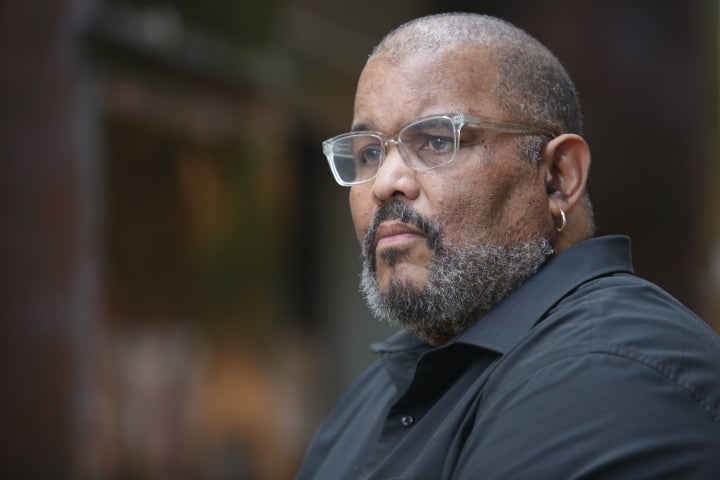
John D. and Catherine T. MacArthur Foundation
Dawoud Bey is a 63-year-old photographer and educator who creates deeply engaging portraits of individuals from overlooked communities and reimagines how cultural institutions can better serve the communities in which they are based. In 2013, the Chicago-based artist created “The Birmingham Project,” a photo series paying tribute to the six children killed in the 1963 bombing of the Sixteenth Street Baptist Church and its aftermath in Birmingham, Alabama. His more recent series, “Harlem Redux,” explores the transformative effects of gentrification on the historic black neighborhood.
Regina Barzilay (Computer Scientist)

John D. and Catherine T. MacArthur Foundation
Regina Barzilay is a 46-year-old computational linguist at the department of electrical engineering and computer science at MIT. Barzilay develops machine learning methods that enable machines to interpret human language and perform useful tasks. “One day machines can communicate with us in the same way we communicate with each other,” she told the MacArthur Foundation. Barzilay is currently exploring how machine learning can apply to the field of oncology, specifically in identifying trends that affect early diagnosis, treatment and disease prevention.
Annie Baker (Playwright)

John D. and Catherine T. MacArthur Foundation
Annie Baker is a 36-year-old playwright, based in New York, known for upending expectations of what kinds of people, language and situations are worthy of theatrical interpretation. Her 2009 production “Circle Mirror Transformation” takes place in a community acting class, in which five budding actors participate in exercises that illuminate elements of their interior selves. In 2010′s “The Aliens,” three amateur songwriters get high next to a dumpster, communicating primarily not through language but physical tics and cues.
Greg Asbed (Human Rights Strategist)
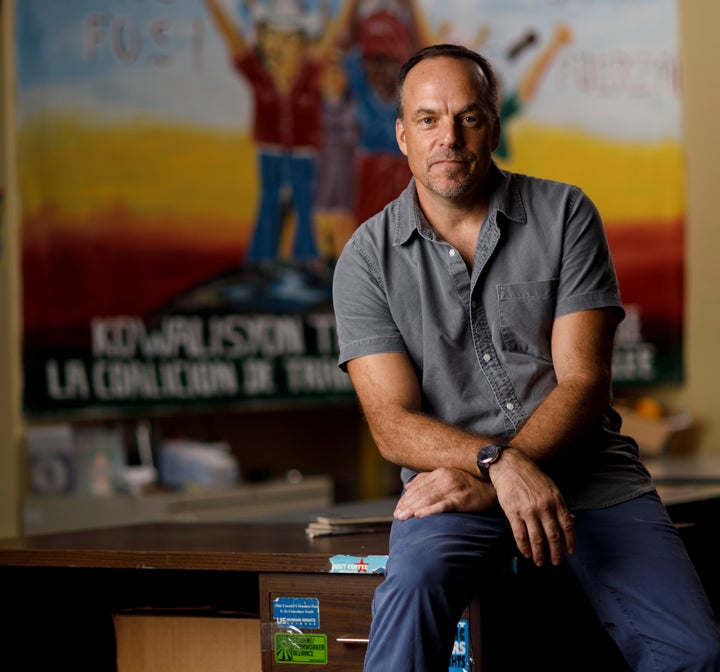
John D. and Catherine T. MacArthur Foundation
Greg Asbed is a human rights strategist and a co-founder of the Coalition of Immokalee Workers and Fair Food Program (CIW) in Immokalee, Florida. For decades, the CIW has fought to improve conditions for low-wage workers and provide protections from sexual assault, wage theft and other abuses in the workplace. With his approach, dubbed worker-driven social responsibility (WSR), which has already spread from crop industries in Florida to the dairy industry in Vermont and garment industry in Bangladesh, he hopes to transform workplaces around the world.
Sunil Amrith (Historian)
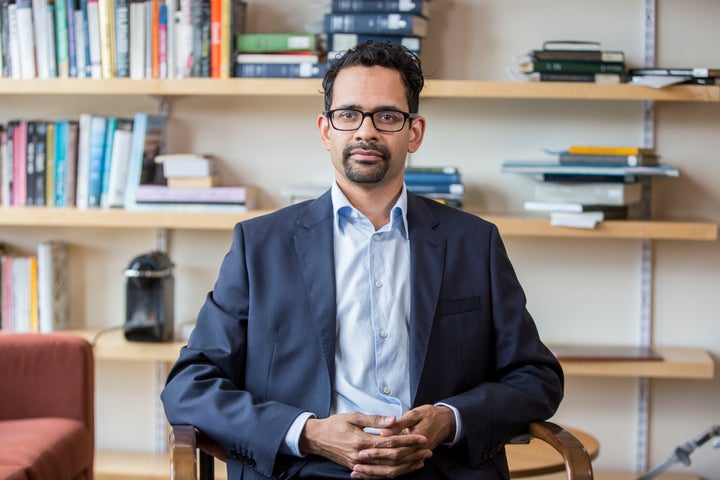
John D. and Catherine T. MacArthur Foundation
Sunil Amrith is a 38-year-old historian in the department of South Asian studies at Harvard University. He studies migration in South and Southeast Asia, particularly in relation to the movement of people and goods across the Bay of Bengal, which has occurred for centuries and continues to impact culture to this day. His 2013 book Crossing the Bay of Bengal examines how climate and environment shape the lives of ordinary Indians, and his upcoming work will delve into how climate change ― specifically monsoons ― continue to alter South and Southeast Asian history.
Njideka Akunyili Crosby (Painter)
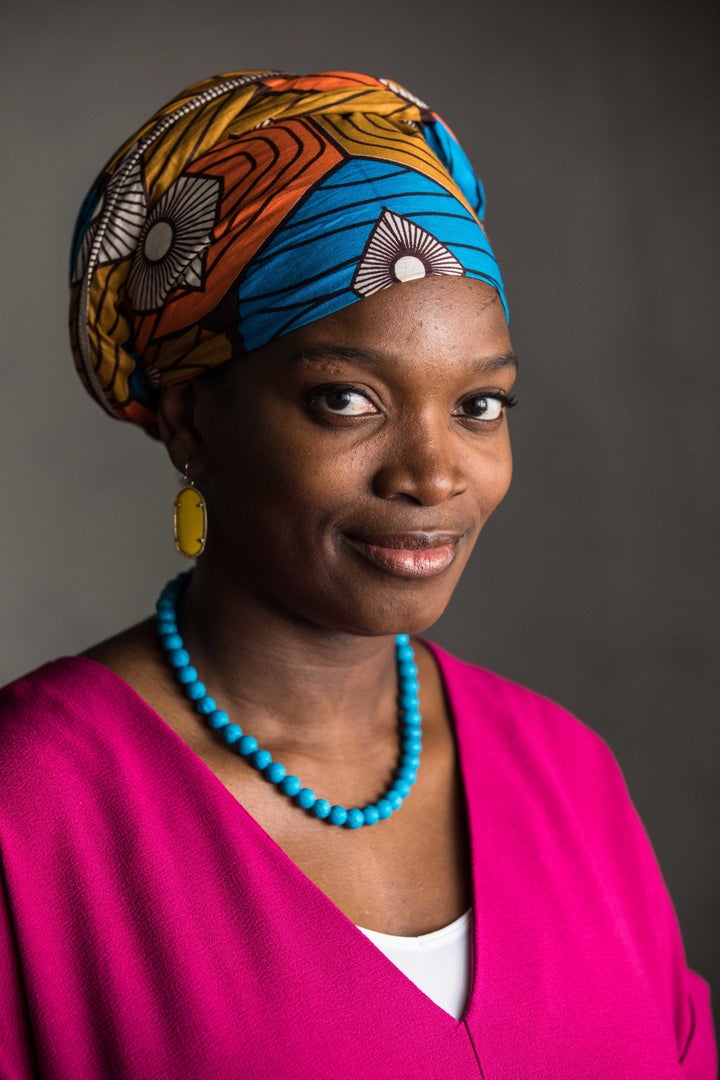
John D. and Catherine T. MacArthur Foundation
Njideka Akunyili Crosby is a 32-year-old figurative painter, born in Nigeria and based in Los Angeles, whose work combines techniques, media and subjects to visualize the hybrid reality of the immigrant experience. Crosby’s multimedia paintings invite viewers into her own intimate world, introducing them to her home and her family, to capture the global story of existing in between boundaries, cultures and traditions. At once accessible and incredibly dense, Crosby’s images offer textured representations of spaces, people and lives that fold in multiple perspectives and defy simple categorization.
[ad_2]
Source link
Eran Chen Shares a Favorite Painter, His 4-Legged Child + More
[ad_1]
Architect Eran Chen established ODA in 2007, and has earned a reputation for designing mold-breaking structures meant to deliver a better urban future. In the past decade alone, he’s completed more than 50 buildings, becoming one of the most prolific architects in New York while doing so.
Eran’s mom seemed to all but predict his eventual career during his childhood. “When I was around 12 years old, I sat down and drew my family’s living room, in perspective view. The drawing captured everything, the windows, furniture, and accessories. When my mom saw it, she said, “Eran, you’re going to grow up to be an architect,” and I guess that really stuck with me. Over the years I thought about going into medicine or psychology, but something always brought me back to architecture. It was my destiny.” Eran’s also quite musical, and jokes that his mom must not have seen a career as a rockstar in his future!
“For me, architecture isn’t just work, it really is my life. So, I never fully switch from one to the other,” he shared. “I do, however, need mental breaks from time to time, and spending time with my family is my favorite way to do that. We’re fortunate enough to have a house in upstate New York and every Friday night, we drive up there for the weekend. The time in the car is perfect to make the mental shift, and once we get there, we’ve left our city lives (and worries) behind.”
Recent projects include the renovation of the former Postkantoor in Rotterdam, an urban plan in Chicago, and the conversion of a defunct parking garage into a public park and class A office building in Buenos Aires. His writings on architecture have been published in Unboxing New York and in ODA: Office of Design and Architecture, which features notable projects from Eran’s portfolio and the firm’s range in architecture – from apartments to buildings to neighborhoods.
“No ideas should be cherished as works of art unless they are,” he said. “That’s how our process unfolds at ODA: we start off with so many ideas, then we test and scrutinize them, without having an attachment until they form into the pieces of art they’re meant to be.”
Eran’s work has been widely published and recognized by the AIA, the Society of American Registered Architects, and others. In addition to guest lecturing globally, he’s also an Adjunct Professor at both Columbia University and New York University.
This week, Eran Chen is joining us for Friday Five!

Photo courtesy Pepolino
It’s an authentic, family-owned and run Italian restaurant that’s my go-to in my neighborhood. I love it when the family speaks Italian in the restaurant. The food is simple, so the quality really shines through. It’s off the beaten path and a hidden gem, since most of the restaurant is on the second level.

Photo: Marco Grassi
Marco is a young artist from Italy, who creates hyper-realistic oil paintings. I have several of them in my loft. His work reminds me of the old Dutch masters, every work is a masterpiece. Each of his paintings takes up to four years to complete – and it’s worth the wait.
The Whitney Museum on the High Line in New York is my favorite museum – and one of my favorite urban experiences. Renzo Piano’s design feels like a natural extension of the High Line, combining views of the city, the Hudson River, and of course, the art. I love how you make your way down the museum through outdoor terraces, it’s truly a perfect integration of the urban environment.
4. My Brown Lab, Boo
My fourth child, not in importance but in age. He’s the only one in my house who doesn’t criticize me or ask me for anything… except food.
5. Small Ceramic Homes
I have these 6 tiny white ceramic homes that were made by a craftsman in Tbilisi, Georgia. They each have either a small light inside or a chimney made to hold incense, so that at night they emanate a small glow.
Work by Eran Chen + ODA:

101 West 14th Street Located at the nexus of Greenwich Village, West Village, Union Square, and Chelsea, 101 West 14th Street is a boutique residential building designed by ODA Architecture and developed by Gemini Rosemont Development. Recently completed, the 13-story condominium features 10,000 square feet of amenities and 44 one-to-four-bedroom residences with interior design by Whitehall Interiors. 101 West 14th Street is modern yet contextual, with a glass box façade and fractal geometry that creates a sense of lightness, airiness, and depth. The building’s geometric façade, which has become a signature element across ODA’s architectural portfolio, grounds the bustling corner and provides breathing room for the passersby. Similar to what’s found in nature, pattern repetition has a natural soothing effect on our brains. Photo: Scott Frances
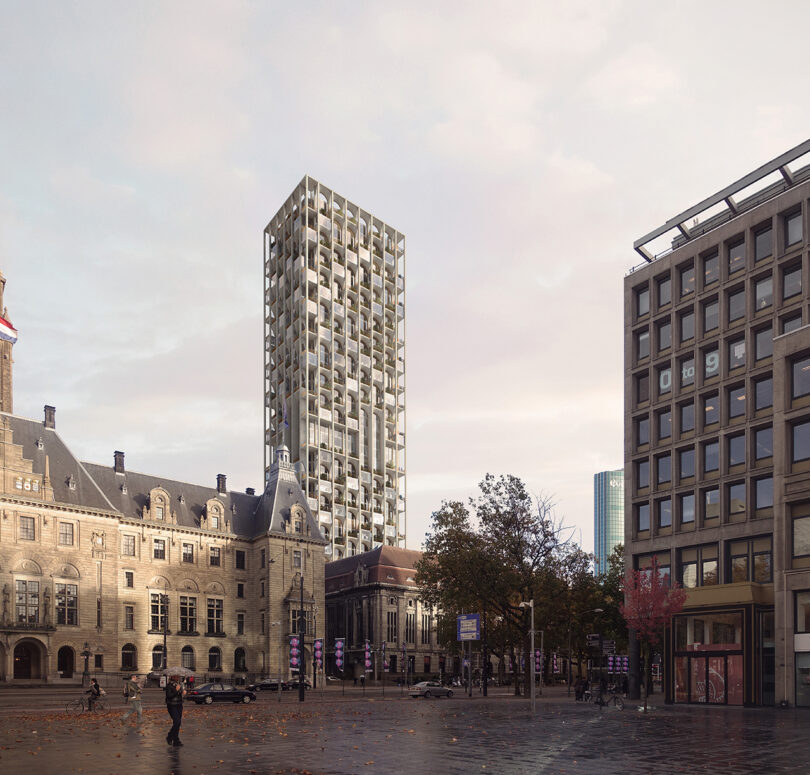
POST Rotterdam Located in Rotterdam’s city center, this historically important building stands as a testament to its inextinguishable spirit. Built in 1916, it was one of the only original structures still standing after the Rotterdam Blitz, the aerial bombardment that in 1940 leveled nearly all of the city’s historic core. Restoring, designing, and engineering the conversion of such valuable heritage requires the utmost reverence for the remarkable history of the building, but also the vision and ambition to deliver a civic hub worthy of its central setting. ODA’s design features a new 150-meter tower rising towards the rear of the Postkantoor and straddling the existing open courtyard at the Rodezand wing. The vaulted plinth of the tower will greatly enhance the experience of the courtyard, coupling it with the Great Hall of the Postkantoor. Designed with nonpareil windows, the POST tower shows openings that vary in size and shape to funnel daylight. This variety sets a break from the series of glass-facade towers along the new Rotterdam skyline and celebrates the elegance of the main hall along its profile. Photo: Forbes Massie Studio

West Half West Half houses 465 apartments – nearly 1000 people – in a single square block. The internal circulation of the building, the curated multi-level amenities, access to outdoor space, and the cascading nature of the facade which creates a connection at the street level give the building a transparent, approachable feel, while the bright yellow underbelly of the facade is a subliminal layer of color theory 101: Happiness. ODA’s three-pronged approach of integrating architecture, interior design, and landscape design gives West Half a thorough narrative: from the three-dimensional patterns of the lobby interiors that mimic the facade to the amenities that punctuate the building with pockets of life, to the extensive terrace landscaping with first-of-its-kind built-in planters that grow and change with the seasons. Photo: Scott Frances

Quay Tower Quay Tower and The Landing’s design concepts stem from the history of the neighborhood, merging its past as a hub of manufacturing to a now transformed, prime residential area. The façades of this affordable housing complex represent the industrial past by the use of Brooklyn’s characteristic materials, and the residential present through the insertion of outdoor spaces to the overall volume. The juxtaposition of traditional materials and residential volumes signifies the historical transition of this Brooklyn area. The floor-to-ceiling windows are a design feature commonly utilized in modern architecture to establish a strong connection between indoor and outdoor spaces. In the context of Quay Tower’s building facade facing a waterfront area and views of Brooklyn Bridge Park, these windows play a pivotal role in enhancing the residents’ experience and engagement with the natural surroundings. Photo courtesy Quay Tower
This post contains affiliate links, so if you make a purchase from an affiliate link, we earn a commission. Thanks for supporting Design Milk!
[ad_2]
Source link
MacArthur Foundation Announces Its 2017 Class Of ‘Geniuses’
[ad_1]
From a reporter who’s dedicated her career to documenting segregation in America’s education system, to one of the first computer scientists to hack an automobile, to an artist who doubles as a counter-surveillance researcher, this year’s roster of MacArthur Fellows celebrates yet another year of exceptional human achievement.
The John D. and Catherine T. MacArthur Foundation announced the latest recipients of its annual MacArthur Fellowship ― frequently referred to as the “Genius Grant” ― early Wednesday morning. Nikole Hannah-Jones, Stefan Savage and Trevor Paglen are but three members of an impressive class of 2017 fellows, newly endowed with a $625,000 check and an accolade previously attached to icons like Susan Sontag, astrophysicist Joseph Taylor and musical tour de force Lin-Manuel Miranda.
The MacArthur Foundation began doling out grants in 1981 in an effort to identify and extol high-achieving individuals in a wide range of disciplines. (The 2017 list of grantees counts a painter, immunologist, human rights strategist, urban planner and novelist among its two dozen-deep roster.) The once-$50,000 award has since ballooned into the six-figure, “no strings attached” grant we know today. There are no restrictions governing what recipients do with their fellowship bounty.
This year, the fellows include nine women, 14 men and one gender-non-conforming individual, ranging in age from 33 to 63. See the entire list of new “geniuses” below.
For more MacArthur Fellowship coverage, check out our interviews with grantees Rhiannon Giddens and Viet Thanh Nguyen.
Jesmyn Ward (Fiction Writer)
John D. and Catherine T. MacArthur Foundation
Jesmyn Ward is a 40-year-old fiction writer based in New Orleans, Louisiana, whose stories bring black, marginalized communities to the center. Her three novels, including Salvage the Bones (2011) and Sing, Unburied, Sing (2017), address brutal and often ignored realities including poverty, racism, addiction and incarceration with honesty, affection and rigor.
Gabriel Victora (Immunologist)

John D. and Catherine T. MacArthur Foundation
Gabriel Victora is a 40-year-old immunologist working in New York City. He adapted and perfected cellular imaging methods to better visualize the process through which adaptive immunity develops. His analysis of B cells yielded “the most definitive evidence to date that affinity maturation of antibodies occurs in a manner akin to Darwinian evolution,” a previously hypothesized but not ultimately proven conclusion that will benefit the creation of new and more potent vaccines.
Tyshawn Sorey (Composer and Musician)

John D. and Catherine T. MacArthur Foundation
Tyshawn Sorey is a 37-year-old multi-instrumentalist, composer, performer and conductor in Middletown, Connecticut. His singular practice straddles the line between improvisation and composition, collapsing boundaries between genres and traditions including Western classical, American and Ethiopian creative expressions, resulting in experimental, avant-garde arrangements that test the limits of musical performance.
Yuval Sharon (Opera Director and Producer)

John D. and Catherine T. MacArthur Foundation
Yuval Sharon is a 37-year-old director and producer of opera whose unorthodox performances ― often immersive and itinerant ― challenge the predominant understanding of what opera can be. His 2014 piece Hopscotch: A Mobile Opera for 24 Cars, took place in and around Los Angeles, with audience members commuting in limousines as singers and musicians emerged at various locations ― and within the vehicles themselves ― to tell a dynamic story within a living city.
Stefan Savage (Computer Scientist)

John D. and Catherine T. MacArthur Foundation
Stefan Savage is a 48-year-old computer scientist whose interdisciplinary techniques address cybersecurity in the age of “smart” devices. Based in LaJolla, California, Savage recently demonstrated how an automobile could be hacked remotely and began working with car manufacturers to reduce security threats. His research in internet-related crimes, and the technological and cultural blindspots that enable them, prove critical in today’s constantly evolving technology landscape.
Damon Rich (Designer and Urban Planner)

John D. and Catherine T. MacArthur Foundation
Damon Rich is a 42-year-old designer and urban planner whose strategies uproot the systems of oppression and discrimination embedded in cities’ layouts through predicaments like division, gentrification and environmental injustice. The Newark, New Jersey-based planner is known for his clever and sometimes witty approach to the field, as evidenced in his 2009 book Red Lines Housing Crisis Learning Center, which used the Queens Museum’s 1,000-square-foot representation of New York City to visualize the foreclosure crisis. His work invites citizens who are often disenfranchised to the forefront of conversations about urban design, bringing democracy to the city space.
Derek Peterson (Historian)

John D. and Catherine T. MacArthur Foundation
Derek Peterson is a 46-year-old historian and professor at the University of Michigan in Ann Arbor, where he studies and preserves East African texts, specifically in Gikuyu and Swahili, to challenge predominant narratives regarding colonialism and nationalism in Africa. Peterson’s research incorporates an unrivaled array of written materials, ranging from diaries and religious pamphlets to syllabi and dictionaries, which speak to the interplay of motivations, perspectives, traditions and contexts at play in these often overlooked materials.
Betsy Levy Paluck (Psychologist)

John D. and Catherine T. MacArthur Foundation
Betsy Levy Paluck is a 39-year-old research psychologist at Princeton University concerned with destructive patterns of human behavior, including discrimination, bullying and ethnic conflict. Paluck’s field research, which has taken her from American high schools to post-conflict Rwanda, determined that, as the MacArthur Foundation describes, “to change behavior, it is more important to target individuals’ perceptions of social norms than their personal beliefs.”
Trevor Paglen (Artist and Geographer)

John D. and Catherine T. MacArthur Foundation
Trevor Paglen is a 43-year-old, Berlin-based conceptual artist and geographer who uses public records and declassified documents as artistic materials, exposing the alarming grip military and corporate power possess in today’s climate of mass surveillance. His practice includes the establishing of “limit telephotography,” which uses high-power telescopes and cameras to photograph secret prisons and military bases.
Kate Orff (Landscape Architect)

John D. and Catherine T. MacArthur Foundation
Kate Orff is a 45-year-old landscape architect and founding principal of SCAPE, a Manhattan-based urban design studio that believes in urban landscapes’ ability to revive ecosystems, adapt to the difficulties posed by climate change and connect individuals. Orff collaborates with ecologists, engineers, educators, artists and community members to draw attention to the natural histories of specific regions, whether through infrastructure initiatives or podcast tours.
Viet Thanh Nguyen (Fiction Writer and Cultural Critic)

John D. and Catherine T. MacArthur Foundation
Viet Thanh Nguyen is a 45-year-old writer, cultural critic and University of Southern California professor who uses fiction to provide a “voice to the voiceless,” specifically by humanizing underrepresented minorities. His 2015 novel The Sympathizer is a spy thriller told from the perspective of a communist double agent in and after the Vietnam War. His stories offer alternative understandings of well-trodden American war stories, where marginalized voices are often obscured and erased.
Rami Nashashibi (Community Leader)

John D. and Catherine T. MacArthur Foundation
Rami Nashashibi is a 45-year-old community leader and the executive director of the Inner-City Muslim Action Network (IMAN). The organization, based in Chicago’s South Side, works to provide health and wellness services, community organizing, criminal justice reform, arts enrichment and other services to low income residents. His Muslim Run Corner Store Campaign brought a wider selection of healthy foods to overlooked neighborhoods and eased racial tensions between the predominately Arab immigrant store owners and black patrons.
Taylor Mac (Theater Artist)

John D. and Catherine T. MacArthur Foundation
Taylor Mac is a 44-year-old, New York-based theater artist ― and at times a playwright, performance artist, actor and all three at once. Mac, who uses the gender pronoun judy, breaks down distinctions between highbrow and lowbrow art to toy with cultural assumptions about gender, performance and identity. judy’s 24-hour piece “A 24-Decade History of Popular Music” (2014–2016), explores the history of American popular music through a queer lens, highlighting the instances in which pop culture innovations have emerged as weapons against intolerance and injustice.
Cristina Jiménez Moreta (Social Justice Organizer)

John D. and Catherine T. MacArthur Foundation
Cristina Jiménez Moreta is a 33-year-old social justice organizer, as well as the co-founder and the executive director of United We Dream, a nationwide network dedicated to helping immigrant families based in Washington, D.C. Moreta came to the United States from Ecuador as a 13-year-old undocumented immigrant. She has since worked to put young people at the forefront of a strategic effort to challenge the stigmas undocumented youth face and enact the policy changes necessary to protect them from deportation and offer a pathway to citizenship.
Rhiannon Giddens (Singer, Instrumentalist and Songwriter)

John D. and Catherine T. MacArthur Foundation
Rhiannon Giddens is a 40-year-old singer, instrumentalist, songwriter, musical historian and activist based in Greensboro, North Carolina. Having trained as an opera singer before mastering the fiddle and five-string banjo, Giddens illuminates the overlooked influence of African-American artists to genres like folk and country. “I’m really interested in shining a light on those aspects of musical history that have been traditionally neglected and left behind,” she told the MacArthur Foundation. “Because I feel that our current situation can be explained by what’s going on culturally in years past that hasn’t been addressed.”
Nikole Hannah-Jones (Journalist)

John D. and Catherine T. MacArthur Foundation
Nikole Hannah-Jones is a 41-year-old investigative journalist for The New York Times Magazine who often explores the effects of segregation on the American education system. Her work, including the 2016 article “Choosing a School for My Daughter in a Segregated City”, combines historical research and political analysis with first-person accounts, bringing the persistent reality of systemic racism and its pernicious effect on children and communities into sharp focus.
Jason De León (Anthropologist)

John D. and Catherine T. MacArthur Foundation
Jason De León is an anthropologist at the University of Michigan who combines ethnographic analysis, forensic science and archaeological research in his work studying migration from Latin America to the United States. His 2015 book The Land of Open Graves: Living and Dying on the Migrant Trail, investigates the approximately 300 people a year who die attempting to cross the U.S.-Mexico border, often with no identification or belongings on their person. The work explores who they are, how they die and what happens to them afterward.
Emmanuel Candès (Mathematician and Statistician)

John D. and Catherine T. MacArthur Foundation
Emmanuel Candès is a 47-year-old applied mathematician and statistician at Stanford University. His research, as explained by The MacArthur Foundation, “focuses on reconstructing high-resolution images from small numbers of random measurements, as well as recovering the missing entries in massive data tables.” Candès compared the technique, which is applicable in fields from diagnostic healthcare to radar imaging, to inferring a customer’s Netflix preferences from the limited assortment of movies she views and rates.
Dawoud Bey (Photographer and Educator)

John D. and Catherine T. MacArthur Foundation
Dawoud Bey is a 63-year-old photographer and educator who creates deeply engaging portraits of individuals from overlooked communities and reimagines how cultural institutions can better serve the communities in which they are based. In 2013, the Chicago-based artist created “The Birmingham Project,” a photo series paying tribute to the six children killed in the 1963 bombing of the Sixteenth Street Baptist Church and its aftermath in Birmingham, Alabama. His more recent series, “Harlem Redux,” explores the transformative effects of gentrification on the historic black neighborhood.
Regina Barzilay (Computer Scientist)

John D. and Catherine T. MacArthur Foundation
Regina Barzilay is a 46-year-old computational linguist at the department of electrical engineering and computer science at MIT. Barzilay develops machine learning methods that enable machines to interpret human language and perform useful tasks. “One day machines can communicate with us in the same way we communicate with each other,” she told the MacArthur Foundation. Barzilay is currently exploring how machine learning can apply to the field of oncology, specifically in identifying trends that affect early diagnosis, treatment and disease prevention.
Annie Baker (Playwright)

John D. and Catherine T. MacArthur Foundation
Annie Baker is a 36-year-old playwright, based in New York, known for upending expectations of what kinds of people, language and situations are worthy of theatrical interpretation. Her 2009 production “Circle Mirror Transformation” takes place in a community acting class, in which five budding actors participate in exercises that illuminate elements of their interior selves. In 2010′s “The Aliens,” three amateur songwriters get high next to a dumpster, communicating primarily not through language but physical tics and cues.
Greg Asbed (Human Rights Strategist)

John D. and Catherine T. MacArthur Foundation
Greg Asbed is a human rights strategist and a co-founder of the Coalition of Immokalee Workers and Fair Food Program (CIW) in Immokalee, Florida. For decades, the CIW has fought to improve conditions for low-wage workers and provide protections from sexual assault, wage theft and other abuses in the workplace. With his approach, dubbed worker-driven social responsibility (WSR), which has already spread from crop industries in Florida to the dairy industry in Vermont and garment industry in Bangladesh, he hopes to transform workplaces around the world.
Sunil Amrith (Historian)

John D. and Catherine T. MacArthur Foundation
Sunil Amrith is a 38-year-old historian in the department of South Asian studies at Harvard University. He studies migration in South and Southeast Asia, particularly in relation to the movement of people and goods across the Bay of Bengal, which has occurred for centuries and continues to impact culture to this day. His 2013 book Crossing the Bay of Bengal examines how climate and environment shape the lives of ordinary Indians, and his upcoming work will delve into how climate change ― specifically monsoons ― continue to alter South and Southeast Asian history.
Njideka Akunyili Crosby (Painter)

John D. and Catherine T. MacArthur Foundation
Njideka Akunyili Crosby is a 32-year-old figurative painter, born in Nigeria and based in Los Angeles, whose work combines techniques, media and subjects to visualize the hybrid reality of the immigrant experience. Crosby’s multimedia paintings invite viewers into her own intimate world, introducing them to her home and her family, to capture the global story of existing in between boundaries, cultures and traditions. At once accessible and incredibly dense, Crosby’s images offer textured representations of spaces, people and lives that fold in multiple perspectives and defy simple categorization.
[ad_2]
Source link
Fever Scout: the wearable thermometer for kids that’s like a digital Mary Poppins | Design
[ad_1]
Worried your child might have a fever? Help is now at hand thanks to a cunning new invention developed by New Deal Design and VivaLnk, a pair of San Francisco companies who devote themselves to developing solutions to problems you never even knew you had.
The Fever Scout is a soft wearable thermometer that continuously monitors the temperature of whatever it is stuck on, then sends the information wirelessly to your smartphone. As a result, you can check your child’s temperature in the middle of the night by simply looking at your phone, making childcare as easy as Instagram.
“Until now, monitoring your kid’s temperature has been clumsy and awkward,” says the promotional video, “poking things in their ears, sticking things under their tongues, or even dragging things across their foreheads.”
The Fever Scout changes all that. Not much bigger than a sticking plaster, and designed as a colourful swooshy zigzag, the rechargeable device simply sticks to your child’s torso and sends a continuous stream of temperature data to you via Bluetooth. You can even set a temperature alert, so it will wake you if it gets too high. The temperature history is stored on the app too, so you can monitor recovery time and the effectiveness of drugs (as well as see when your child has cleverly removed the patch and stuck it on the radiator to get a day off school).
“We wanted to make this into a fun thing, so it’s actually kind of a symbol of activity,” says Gadi Amit, founder of New Deal Design. “We didn’t want it to be too medical.” New Deal also invented the FitBit, a device that spawned an entire industry of wearable health trackers – a market set to reach $5bn by 2019, of which electronic temperature monitoring alone will account for over $800m.
As the smart “self-care” industry booms, these wearable devices are getting ever smaller, which poses a challenge to designers. VivaLnk developed the stick-on “eSkin” circuit board, a flexible, breathable patch that can be so slender it’s almost invisible – which raised the question of what the Fever Scout device should actually look like, so it doesn’t get lost between sheets or clothing.
“Dematerialisation is a big issue,” says Amit. “You suddenly have no constraints, but at the same time, you’re looking for something iconic. What is the form of something that’s so amorphous? It was actually a big debate.”
New Deal have also come up with a baby-sized ankle bracelet that live-streams every piece of vital data straight to your phone. As well as giving you the child’s heart rate and skin temperature, body position and motion, the Sproutling can also predict when your baby is going to wake up and what kind of mood they are likely to be in when they do so. It’s either a digital Mary Poppins or a police tracking device – what more could you want?
[ad_2]
Source link
A Mesmerizing Figure 8 House Defies Gravity in Balinese Jungle
[ad_1]
In the heart of Bali’s lush jungle, a mesmerizing architectural structure has taken root, challenging conventional notions of residential living. The Loop, a jaw-dropping spiral house in Pajangan, Bali, has redefined the essence of living amidst a tropical paradise, thanks to architect Alexis Dornier, with the help of interior designer Silvia Fairman.
The design behind The Loop began with a desire to eschew the ordinary. The simple design brief – “We have lived in boxes our entire life – we now seek the opposite” – allowed Dornier to break free from architectural norms and create a space that captures the essence of freedom. Leaving the typical box behind, Dornier dreamt up a design that defies gravity, embraces fluidity, and invites inhabitants to live life on their own terms.
Inspired by the beauty of the natural world and motivated by the challenge of pushing architectural boundaries, The Loop’s design concept took shape as a figure 8 spiral. This innovative and daring approach offers a continuous, ever-changing experience, allowing residents to explore its unique radial design. It’s a journey into uncharted territory where the house itself becomes a work of art, transcending the confines of conventional living.
One of the project’s most remarkable achievements lies in its seamless integration with the surrounding jungle. Carefully chosen materials such as concrete, wood, and natural stone effortlessly connect the structure with the greenery, creating an environment that exudes sophistication and modernity while respecting the jungle it calls home.
But The Loop wasn’t without its challenges. Bending materials in two dimensions and solving complicated geometrical situations required close planning with skilled artisans. It was a journey that tested the boundaries of architectural possibilities, resulting in a unique and captivating house.
Throughout the process, the collaboration between the architects and their clients was key. The homeowners actively participated in material selection and design decisions, fostering a connection with the home and a feeling of shared ownership.
The house itself, appears to float above the ground on a steep slope, blending seamlessly with the jungle’s natural environment. Careful landscaping blurs the lines between the structure and nature, transforming it into “a living entity that symbolizes unity with the surroundings.”
Strategically laid out, each room in The Loop offers breathtaking views and a sense of discovery as one moves throughout. From bedrooms to communal spaces, every corner of the house becomes a tranquil spot, immersing the residents into the surrounding serene beauty.
Photography by KIE.
[ad_2]
Source link
































